READY TO GET STARTED?
REQUEST A FREE ESTIMATE
Fill out the form below or call (888) 466-7849 for a free, no-obligation estimate.

We’ve all been there. You start cooking and open up the bag of flour only to find a bug staring back at you! Yuck! Stored product pests include both storage and pantry pests and fabric pests. Pantry pests are most commonly found in kitchens and food storage areas. Fabric pests are most commonly found in closets and rooms with a source of fiber, fur, or leather. These pests are often not spotted until they leave their food source to crawl or fly around your home. So what kind of pests are these and what can you do to prevent them? Check out these common storage and pantry pests and our 12 tips to prevent them.
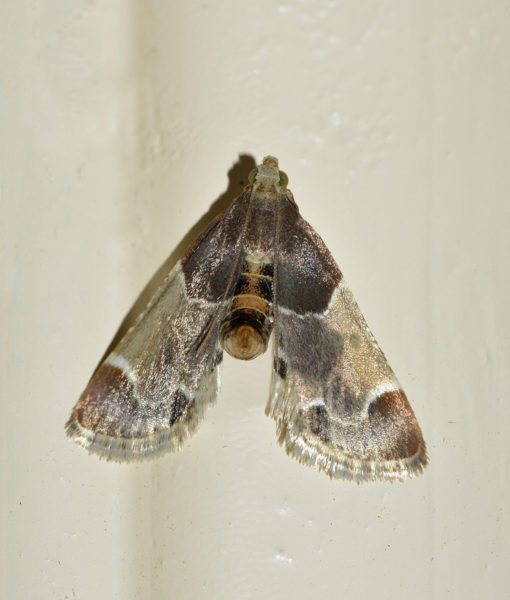
Indian meal moths are one of the most common stored food pests. They are commonly identified by their two toned wing pattern with tan and copper colors. They have a 1/2″ to 5/8″ wingspan. Indian meal moths feed on dried fruits, nuts, chocolate, powdered milk, birdseed, dog food and grains. These moths are most often spotted on ceilings, walls, and countertops. Indian meal moths are usually controlled by removing the infested source of food.
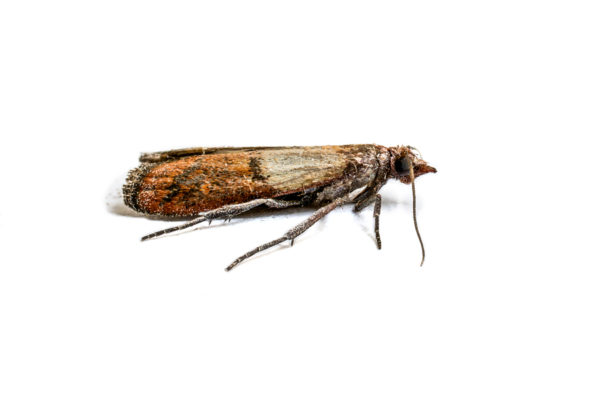
Clothes moths are one of the most common fabric pests. Clothes moths are smaller in size then Indian meal moths. They are identified by their shiny golden scales. Clothes moths are very secretive in nature and are primarily nocturnal. They feed on protein based fibers like wool cloth, carpets, furs, pet hair, piano felts, and natural hair brushes. Infested fabrics can be treated with dry cleaning but this doesn’t prevent reinfestation. Dry cleaned items should be stored in either cold storage or sealed in airtight containers with fresh cedar chips.
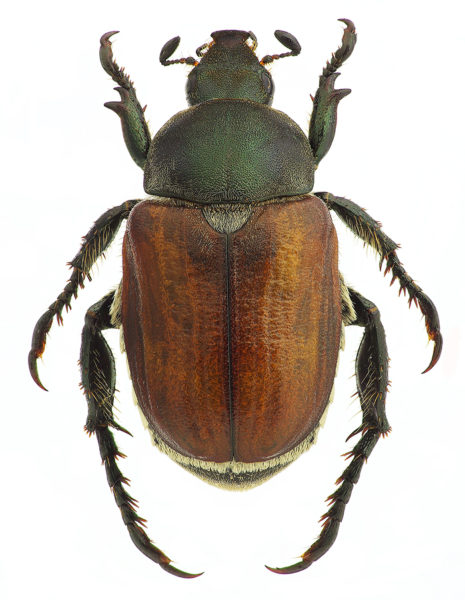
There are several types of beetles that feed on stored food and pantry items. Some of these include weevils, cigarette beetles, drugstore beetles, saw toothed grain beetles, larder beetles, mealworms, and flour beetles. These beetles feed on a variety of stored grains, fruits, spices, powdered milk, dried meat, and dead insects. Beetles can be controlled by finding their food source eliminating it. Once eliminated, all non-infested food supplies should be stored in air-tight containers.
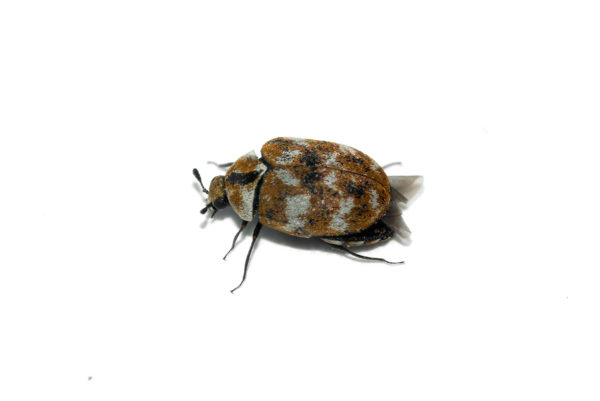
Carpet beetles are the most common fabric pest beetle species. They are small and round with black or mottled wings. Carpet beetles are often mistaken for bedbugs. These beetles will feed on any source of animal protein, fabrics, carpets, and even mounted animal trophies. Carpet beetles can be controlled by inspecting your furs, wool, feathers, silks, and carpets for their presence and treating with heat or cold.
When you reflect on famous artists and their work, like the Mona Lisa by DaVinci for instance, you can immediately appreciate the beauty of their masterpiece. However, when the subject of an artwork is an insect, you might have a little more trouble seeing the beauty in it before wanting to call an exterminator! The brave souls who did make insects their muse had an appreciation for natural history, especially during the 17th century.
Studying bugs for their connection to the earth and nature led to some beautiful creations by Albrecht Dürer such as the Stag Beetle. Dürer said of art, “It is indeed true that art is omnipresent in nature, and the true artist is he who can bring it out.”
Some artists liked to focus on butterflies because they represented transformation and resurrection. Wenceslaus Hollar’s drawing Forty-One Insects, Moths and Butterflies features a collection of bugs of different varieties on displaying much like a “cabinet of curiosity.” Check out this painting and more below!
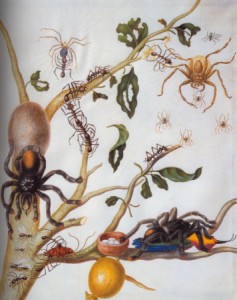
Maria Sibyla Merian, Branch of guava tree with leafcutter ants, army ants, pink-toed tarantulas, c. 1701-5
Melissa Brown
[email protected]
Source:
http://venetianred.net/2010/04/20/the-busy-bee-has-no-time-for-sorrow-insects-in-art/
People love a good myth. These narratives contribute bright symbolism of interactions between higher powers, people, and nature. They assist in many relevant functions as well as further adding colorful stories. One valuable role of myths is to illustrate some angle of life.
Several myths describe the beginnings, morphology, and conduct of various insects. Here are just a few:
The origin of mosquitoes is revealed by The Tlingit Indians of North America. The narration tells of a blood sucking carnivorous giant who dines on humans. This giant is eventually avenged after his horrific death by coming back to feed on humans in the appearance of blood sucking mosquitoes.
An Algonquin tale of North America justifies why bees, wasps, and hornets have stingers. This myth grants that the god Wakonda bestowed stingers to bees because the bees were industrious, but required a defense. Since wasps and hornets are linked to bees, The Great Spirit willingly endowed them with stinging weapons as well.
Ant actions are revealed in an African myth that reminds us of the everlasting punishments of Atlas, Prometheus, and Sisyphus of classical mythology. An infinite punishment of bearing a burden is handed down to ants by deception in the African myth. Accordingly, we see the outcome today in ants repeatedly transporting things in their everyday routine.
And on an absolutely universal spectrum, the composition of our galaxy, The Milky Way, is translated in an insect myth of the Cochiti. This myth tells of an Eleodes Beetle that was in charge of depositing stars in the sky. The stars were dropped due to his ego and recklessness, thus forming the Milky Way. The beetle was so distraught at what he had done, that even today, the beetle hides his face in the dirt when approached – will lower its head, raise its abdomen, and emit a disagreeable odor probably for defense. This simple insect myth explains not only insect behavior, but also the start of our own galaxy.
Who are your favorite mythological characters?